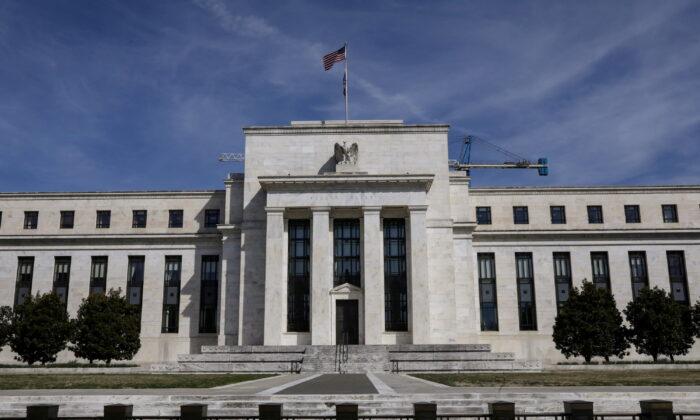Commentary
The December jobs report showed that the economy added 223,000 new jobs, somewhat better than the consensus estimate of 203,000 jobs. This morning’s print is 33,000 fewer jobs than were created in November 2022 and 384,000 fewer jobs than were created in the COVID recovery period of December 2021. Net revisions for October and November resulted in 28,000 fewer jobs in the last three months. (It is generally believed that 200,000–250,000 jobs are required to accommodate population growth.)
The jobs print, 9.8 percent-plus more than was expected and puts Fed rate hikes in question. Many are expecting a possible pause, but others are expecting ongoing rate hikes. Much will depend on how next week’s inflation figures print. We are of the view that we are likely to see continued rate hikes from the Federal Open Market Committee, the policy-making arm of the Federal Reserve, until there is a tipping point that indicates inflation is on a clear glide path toward the Fed’s preferred target of 2 percent. As we wrote back in October, we think the terminal rate is around 5.5 percent, give or take a quarter point.
The unemployment rate was 3.5 percent, the lowest since September. The labor force participation rate was 62.3 percent, up from 62.2 percent, which printed in November.
The principal jobs creation sectors were in education and health services that are heavily subsidized by the government and lower-wage leisure and hospitality (waitstaff, bar tenders, and hotel maids, e.g.).Quarterly Wage Data
Our quarterly review of nominal and real wages shows that nominal wage increases are mostly offset by the ongoing inflation. Employees are working for less, in real terms, notwithstanding a low unemployment rate.
Quarterly Wage Data

Our quarterly review of nominal and real wages shows that nominal wage increases are mostly offset by the ongoing inflation. Employees are working for less, in real terms, notwithstanding a low unemployment rate.Other Data
Federal Reserve Policy
The Fed minutes indicate a possibility the Fed will hold rates steady at some point: “Participants generally observed that maintaining a restrictive policy stance for a sustained period until inflation is clearly on a path toward 2 percent is appropriate from a risk-management perspective.”Nevertheless, the Fed did not tip its hand as to what it views as the terminal rate.
Markets
“Lunch Bucket Joe Biden,” the purportedly pro-union president, signed legislation barring union railway workers from carrying out a strike. As one left-of-center publication put it, the president and Democrats in Congress “‘averted’ a national rail shutdown by overriding the democratic will of rail workers (to strike) and forcing a contract down their throats.” There are no reports of slowdowns or wildcat strikes that we had anticipated in our November jobs report, but we are only a month into the “agreement.”The jobs market is still exceedingly tight, and worse than we have seen in more than 20 years. The Beveridge Curve—which charts the job openings rate along the vertical axis versus the unemployment rate along the horizontal axis, and in which the unemployment rate traditionally exceeds job openings—is printing at an extremely high rate because the job opening rate is virtually double the unemployment rate. That is unlikely to change anytime soon, absent the Fed creating a significant slowdown. Consequently, wages—and inflation—will continue due to cost-push inflation.
Privately owned housing units authorized by building permits in November were at a seasonally adjusted annual rate of 1,342,000.
This is 11.2 percent below the revised October rate of 1,512,000 and is 22.4 percent below the November 2021 rate of 1,729,000.
The IBD/TIPP Economic Optimism Index continues at a negative to middling 42.9 in December.
Both the ISM Purchasers Manufacturing Index and the Purchasers Services Index are pointing to a contracting economy, with the latter turning to contraction from expansion at this month’s report. Moreover, the yield curve inverted by 75 basis points this morning. Inverted yield cures are always a prominent indicator of recession, but 75 bps is particularly troubling.
Commentary
The jobs print and increase in nominal wages will likely cause the Fed to continue to hike rates at a pace of between 25 and 50 basis points. However, as I wrote recently, there are some in the Fed who may be willing to accept a higher target rate of inflation. We see the terminal rate at 5.5 percent and believe the Fed will hold it there for at least two quarters, even if there is a mild recession._______________________________________________________________
DISCLOSURE: The views expressed, including the outcome of future events, are the opinions of The Stuyvesant Square Consultancy and its management only as of November 4, 2022, and will not be revised for events after this document is submitted to The Epoch Times editors for publication. Statements herein do not represent, and should not be considered to be, investment advice. You should not use this article for that purpose. This article includes forward looking statements as to future events that may or may not develop as the writer opines. Before making any investment decision you should consult your own investment, business, legal, tax, and financial advisers. We associate with principals of TechnoMetrica on survey work in some elements of our business.
Note: Our economic and business commentaries most often tend to be event-driven. They are mostly written from a public policy, economic, or political/geopolitical perspective. Some are written from a management consulting perspective for companies that we believe to be under-performing and include strategies that we would recommend were the companies our clients.
Views expressed in this article are the opinions of the author and do not necessarily reflect the views of The Epoch Times.






